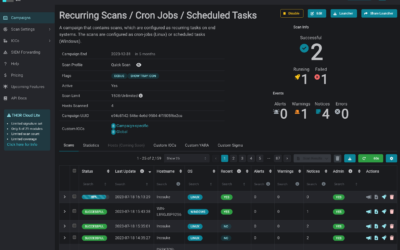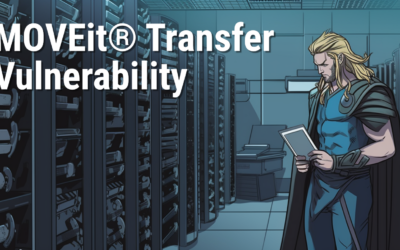We are pleased to announce a significant enhancement for users of THOR Cloud and THOR Cloud Lite: YARA Forge rule sets are now available for integration. YARA Forge is a curated, quality-assured feed of YARA rules developed as a private project. It automates the...
Active Exploitation of SAP NetWeaver Systems — Our Recommendation for Local Scans
In recent days, major security companies such as ReliaQuest and Onapsis have disclosed the active exploitation of CVE-2025-31324, a critical vulnerability in SAP NetWeaver’s Visual Composer component. The vulnerability allows unauthenticated attackers to upload...
Forwarding Profiles in THOR Cloud Enterprise: Direct Log Delivery from Endpoints
We’re introducing Forwarding Profiles in THOR Cloud Enterprise — a feature designed to streamline how scan results are delivered to external systems such as SIEMs, log collectors, or analysis platforms. Rather than downloading logs manually or relying on intermediate...
Streamlining SOC Operations with THOR Cloud: Revolutionizing Remote Forensic Analysis
Security Operations Centers (SOCs) face increasing challenges in defending against sophisticated cyber threats, often compounded by resource limitations. Analyzing large volumes of forensic data to detect indicators of compromise (IoCs) can be a labor-intensive task....
Uncover Hidden Threats with THOR Cloud – Now at 50% Off!
Are you looking for an efficient, cloud-managed solution to streamline your threat detection and compromise assessments? This Black Friday, we’re offering 50% off all THOR Cloud scan packages. Why THOR Cloud? No Setup Hassle: Start scanning within minutes—no agents or...
Introducing THOR Cloud: Next-Level Automated Compromise Assessments
Since the launch of THOR Cloud Lite in September, our team has been dedicated to developing a more powerful version of THOR Cloud that incorporates the full scanner with its extensive suite of forensic modules and expansive detection signature database. Today, we are...
Protecting Your Business: Addressing the Microsoft Exchange Vulnerability Crisis
Discover how to safeguard your business from the ongoing Microsoft Exchange vulnerability crisis highlighted by the German Federal Office for Information Security (BSI). Learn about critical warnings, the importance of patching, and how automated compromise assessments with THOR Cloud Lite can fortify your cybersecurity strategy.
Integration of THOR in Velociraptor: Supercharging Digital Forensics and Incident Response
Digital forensics and incident response (DFIR) are critical components in the cybersecurity landscape. Evolving threats and complex cyber-attacks make it vital for organizations to have efficient and powerful tools available. If you are not already enjoying the...
Introducing THOR-Cloud Lite: Seamless On-Demand Forensic Scanning Made Easy
We just launched THOR-Cloud Lite our new free, lightweight and easy to deploy on-demand compromise assessment scanner. Allowing you to access your scans and reports from everywhere at any time. Licensing, scan campaigns and reports everything is conveniently managed...
Scanning for Indications of MOVEit Transfer Exploitation with THOR Lite
On June 1st, the vendor of MOVEit Transfer, previously known as Ipswitch but now called Progress, announced the discovery of a critical security vulnerability that has been exploited. MOVEit is an enterprise software utilized by numerous organizations globally for...
THOR Seed v0.18 Improves Integration with Microsoft Defender ATP
A new version of THOR Seed improves the integration with Microsoft Defender ATP by handling the script termination caused by exceeded timeouts. Due to a runtime limit for all scripts in the Live Response library we had to configure previous versions of THOR Seed to...
Product Updates Slides – VALHALLA and THOR Cloud
The following slides contain information on changes and new feature in several of our products. VALHALLA Product Update and New Features DOWNLOAD Slide DeckTHOR Cloud Technical Implementation, RoadmapDOWNLOAD Slide Deck







